The ARGOS matrix surface inspection system enables inspection for scratches and defects on optical surfaces. The right choice of camera sensor and lens is essential for the system. For defect sizes between 1 µm and 5 µm, modern image sensors require a lens with a magnification between 0.5x and 3x. This magnification is between that of classical camera lenses and microscope lenses. Therefore, one has to rely on special solutions that meet all requirements. Here we describe a new development of such a lens by DIOPTIC.
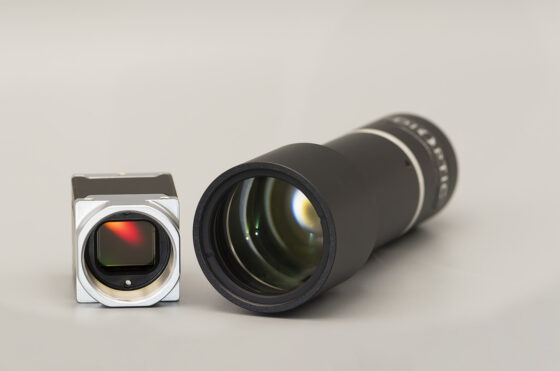
Optical design at DIOPTIC
From lens development for thermographic optics in the MWIR spectrum to bi-telecentric industrial lenses in the visible spectral range to optical design for LIDAR sensors, comprehensive areas of optics development are covered by our expertise. We combine 15 years of optical design expertise with know-how in the use of state-of-the-art software tools such as Synopsys CODE V, Zemax OpticStudio, Autodesk Inventor and MathWorks MATLAB.
The team at DIOPTIC is a reliable partner for the realization of your innovative product ideas. Such a development project is often divided into the following project phases:
1. joint determination of customer requirements
2. concept development
3. design phase
4. production and testing of prototypes
5. series production

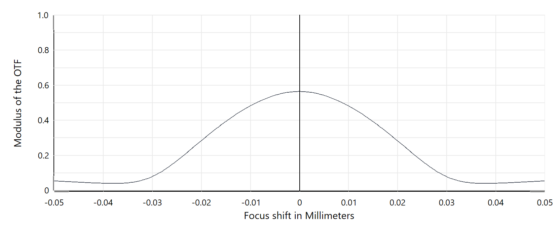
1. Determination of customer requirements
Based on our many years of experience, we place a high value on an application-driven view of the specification of your optical system. Here, we support our customers in critically questioning various specifications in order to avoid costly over-specification or application-disrupting under-specification.
The new ARGOS lens is a telecentric lens that is perfectly adapted to surface inspection and a new high-resolution camera sensor. The f-number of the lens or the numerical aperture must strike a balance between resolution and depth of field. The following requirements must be taken into account here:
- Pixel pitch: 2.74 µm
- Resolution: 4512 × 4512 pixel
- Horizontal field of view: 5°
- Working distance: 70 mm
- Lens magnification: 2x
- Depth of field: 50 – 70 µm
In an initial paraxial analysis, we determine an object-side NA of 0.15 and thus an effective f-number of 6.6. This is a good compromise to ensure the greatest possible depth of field and high contrast at maximum resolution.
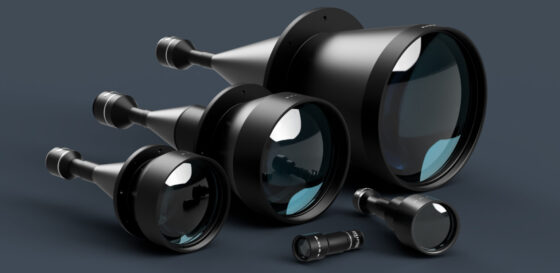
2. Concept development
The creative process takes place in the concept phase. Different concepts are developed, analyzed, and communicated and discussed with you at eye level. We see ourselves in the role of knowledge mediator and sparring partner for critical questions. In the end, you will not only receive a product that meets your specifications, but also one that you understand and can market more efficiently.
An in-house lens from the series of modular bi-telecentric DIOPTIC lenses serves as the initial design for the new ARGOS lens. Based on this, the optical design is adapted so that magnification, working distance and object-side NA meet the requirements. For analysis, the MTF of the system is continuously simulated and optimized.

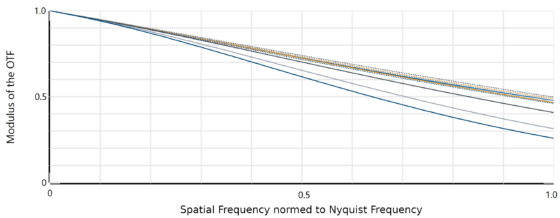
3. Design Phase
The design or development phase is the transfer of the favored concept into a completed product design consisting of optics and optomechanics. The focus of lens development is a detailed tolerance analysis and optimization.
Here, the production tolerances of individual lenses and optomechanics are taken into account as well as chained tolerances resulting from the selected assembly concept of the optomechanics. The result is a trade-off between best possible performance and insensitivity to manufacturing defects, taking into account the manufacturing capabilities of our or your manufacturing partners.
DIOPTIC has a large number of self-developed macros and tools to automate recurring steps in the development process. This significantly accelerates development time and minimizes development costs.
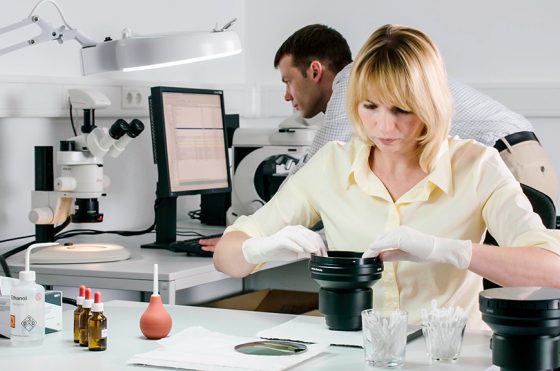
4. Production and testing
For production based on “ready for manufacturing” designs, we draw on a network of external manufacturers for lenses and optomechanics. If requested by the customer, we perform in-house assembly and final testing in a clean room environment or support the customer remotely as well as on-site. In conjunction with our experts in the field of custom inspection systems, there are no limits to the application-related testing of the developed lenses.
5. Series production
Up to a quantity of approx. 200 lenses, DIOPTIC offers the possibility to have assembly and final inspection carried out in-house. For larger quantities, we fall back on our network for the production and assembly and take over the organization of the manufacturers as well as the quality control for our customer.
Whether special designs, small quantities or mass production. We look forward to your challenge and provide you with professional advice and support. Are you looking for a suitable partner for your individual lens? Our experts are looking forward to your inquiries.
You can contact Dr. Markus Rollinger (opticaldesign@dioptic.de) at +49 6201 650 40-00.